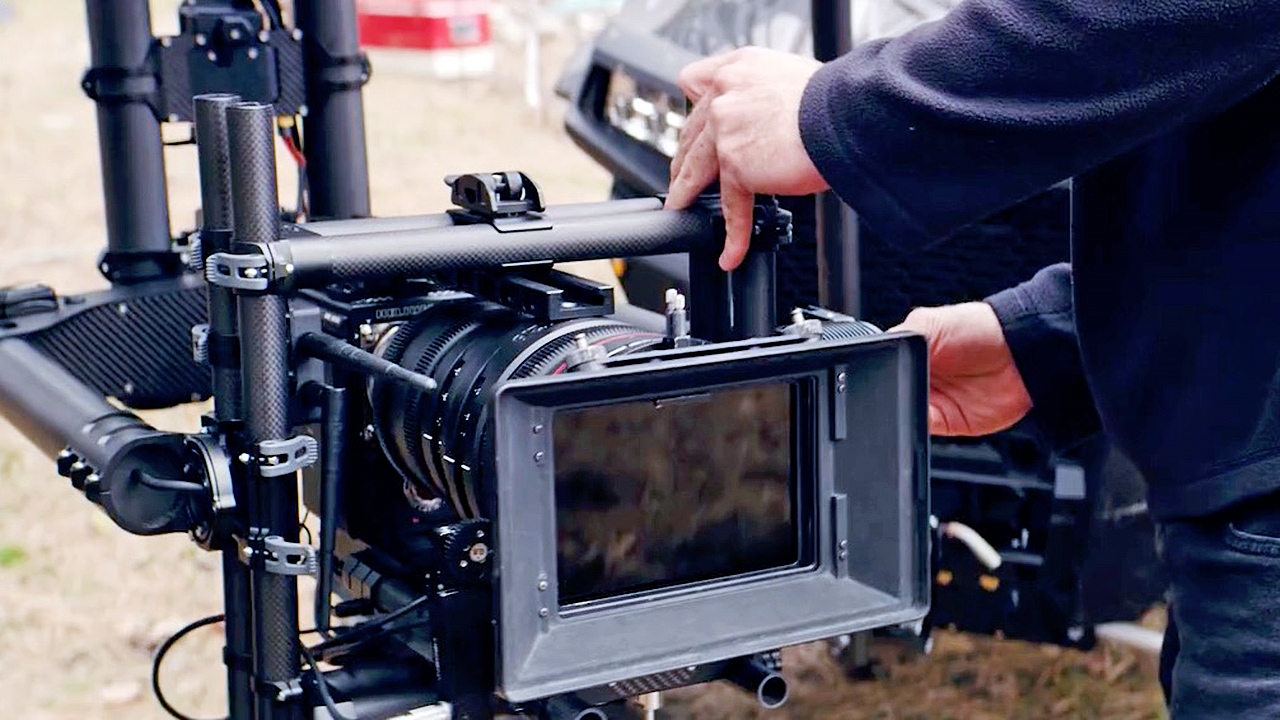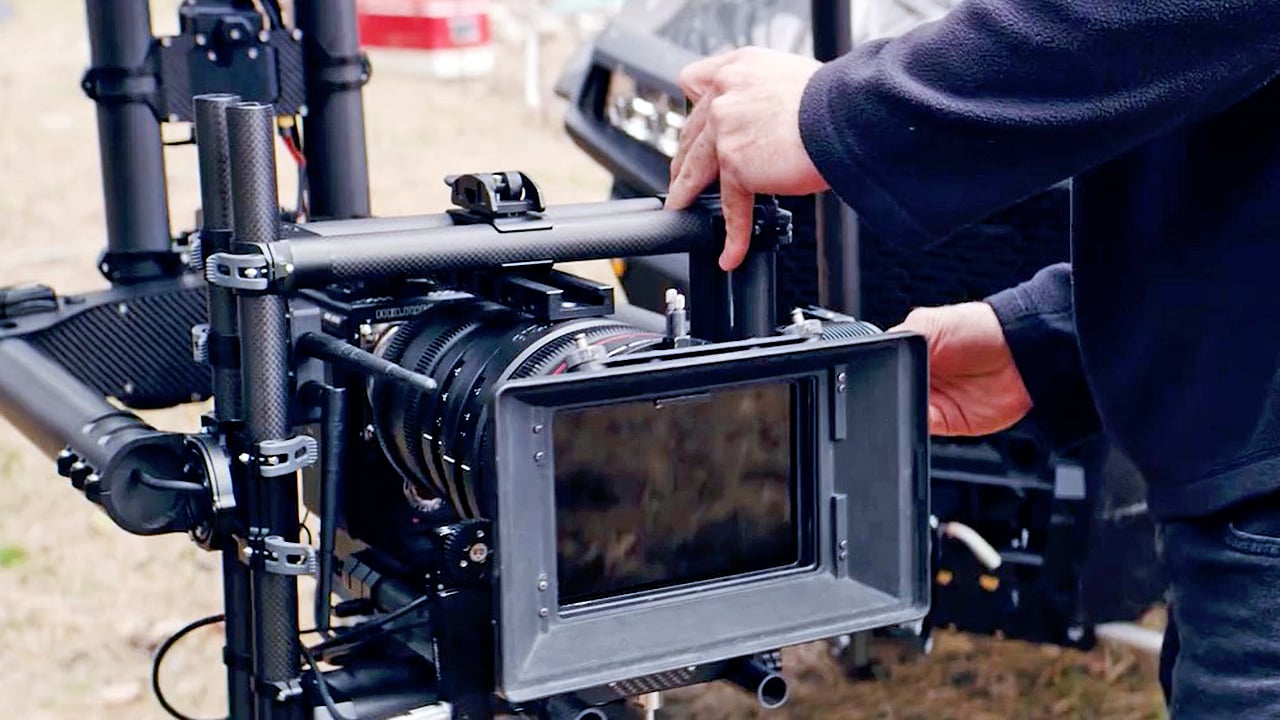
 We are increasingly reliant on robotics to get the shots we want
We are increasingly reliant on robotics to get the shots we want
The rise of the robots. How advancements in robotic stabilisation are already advancing cinematography much more than you might realise.
Maxima, Hydrascope, Oculus, Griptrix, Technocrane, Shotover F1, Movi XL, DJI Ronin and the list goes on. What all of these vaguely ominous names have in common is that they are some of the highest tech, cutting-edge tools available to filmmakers today and they are all robotics systems. Combining high-tech robotics with the needs for cinematic precision, engineers of today are maximising the capabilities of electronics and hardware to create entire realms of high-tech and heavy payload tools for the modern filmmaker. Step on any modern studio set and you would be remiss not to see at least one Technocrane or similar piece of hardware, at least part of the time. Pair this trend in studio production with the introduction of the 5-axis gimbal such as the Maxima and Oculus heads and you have an unstoppable robot force ready to be programmed and operated to achieve the specific needs of any scene at hand.
With an engine capable of reaching speeds of 100mph, the Maxima head is a multi-axis gimbal with the highest powered motors in the business, capable of shearing a finger with ease. Mountable to a ready rig for hand-held operation or easily mountable to a crane, the Maxima head is as versatile as it is powerful. Capable of withstanding gale force winds, the head can be attached to a crane on a truck or modified SUV (commonly used models include the Porsche Cayman) and upon rigging is immediately ready for all types of capture in rugged terrain. The Maxima head allows for a complex and technically impressive cinematic style to be created with ease in the most hostile of environments.
With the advanced development of computing technology, the corresponding complexity of cinematic tools has grown in spades, as has the development of uniquely technical cinematography styles. From the expansive vistas captured by the top line drones fitted with studio camera systems to hand-held 3-axis gimbals and all the way to the 5-axis crane mounted gimbals, the options available to capture a shot with the steadiness and precision of a high-grade computer instrument are endless. Allowing operators the option to program the movements of the computer systems within the hardware or to operate remotely or by hand (selectable by switching modes within the gear), the number of options for new ways to tell a story are growing by the day, with each additional piece of hardware brought to market.
Comparing prosumer to professional
The prosumer market of cinematic robotics is all but dominated by two brands. The venerable Movi, which pioneered the revolution of cinematic stabilisation with the Movi m15 and free-fly systems, to the gargantuan enterprise that is DJI, the expansion of robotics in cinematic capture has brought studio level stabilisation into the hands of semi-professionals and studio level operators alike. This has led to a boom in prosumer robotics such as the DJI Mavic Pro and the Ronin systems, ubiquitous on independent productions of today.
Comparing the new and pristine movement styles of these high-tech robotic systems to a Steadicam, one discovers remarkable differences. Steadicams, which are hydraulic body mounted units, are used to move a camera with a stable and smooth grace and offer an organic option to filmmakers who seek for a gentle and more natural look to their productions. Crane and hand mounted gimbals offer what amounts to a brand new, modern and sleek look to productions, typified by the precision of brushless motors and computer instruments.
This variance in stabilisation style leads productions to make decisions about which robotic or stabilisation systems to use based on the needs of a particular story. In the film Birdman, the Movi system is used to great effect to allow for extended takes which tell almost the complete story of the film in one highly choreographed and extensive shot. Previously used technologies would render this technical task a near impossibility due to the sheer limitations of the systems. As the new robotics utilised by productions worldwide are computer controlled, there is no limit to their precision and how they can be used to achieve camera angles and shots never seen before in the worlds of cinema.
As the possibilities expand and the engineering grows to keep pace with the high-tech needs of today’s big-budget studio pictures, the days of the single camera operator, handheld production are numbered. Instead, these small intimate affairs are being outpaced by productions where, for example, the massive Alexa 65 body would be mounted to a 5-axis gimbal on a griptrix truck and driven 100mph through the Sahara desert while subtly tilting and panning in minute fractional increments of a degree. This complexity of hardware has not only raised the bar for what can be achieved technically but at the same time has also raised the bar of entry into the already complex world of camera operation and studio level capture. As the realm of the camera department comes to include advanced machinery, the roles of the engineer and technical artist are converging to create a position which requires considerable technical knowledge as well as the training to operate a system with multiple, incredibly strong, motors often right near an operator or technician’s fingers.
Remote control
In addition to camera stabilising hardware systems, modern cinema robotics also include remote controlled and under and over-slung suspension systems which allow for operators and directors of photography to pilot and direct the cinematography from a distance. Using a small, skateboard sized car system with a multi-axis gimbal fitted to pilot the movement of a camera, allows for the unit to pass through obstacles not physically possible when limited to the traditional capture and operation style. Take, for example, a traditional dolly system or a handheld system with an operator. Both of these setups are limited by the size of the unit and the operators themselves. This limitation is lifted in the world of robotic cinematography as the systems are reduced in size, depending on the needs of a scene. As the cameras themselves get smaller and smaller and the systems used to acquire cinematic imagery are reduced in size, the need for a camera operator becomes less and less, while the need for technical consultants and machinery experts grows exponentially. With the changing shift in the tools of the trade, the nature of the very professionals using these tools and the skill set required to maximise the potential of the gear is changing at an incredibly rapid pace.
While an organic approach to filmmaking will likely continue to live on at the independent and lower budget levels of production, it is becoming very evident in studio cinema and in our world as a whole, that the robotic revolution is upon us, displacing the tried and true methods of the past. A traditional camera setup on sticks 40 inches from the ground is often now being displaced in favour of using crane and multi-axis gimbal systems literally 40 feet tall, remotely operable and programmable by a computer system. Becoming aware of and versing oneself with the new options available to productions, camera operators and directors of photography everywhere will remain at the vanguard of an industry currently undergoing a remarkable change in style of execution as well as the method of cinematic capture. By embracing the changing robotic revolution, a filmmaker today can breathe a sigh of relief as we finally have entered a period where the sky really is the limit when it comes to what is possible within the cinematic art form. Spurred on by the development of heavy-duty hardware, the technical needs and possibilities of a slow changing art form are propelled into the future by the dominance of the computer system and its integration into the world at large. Now, more than ever is the time to embrace the changing landscape of production through the integration of cinematic robotics. The days of the cyborg film crew are dawning and the possibilities of the art form in this future world are limitless and amorphous.
Tags: Production


Comments